Here is an exchange between Wynn Manners and Margaret Starbird discussing the very intriguing fact that the great Martin Luther believed Mary Magdalene and Jesus were married.
Poet-Mystic Wynn Manners writes:
…we have a statement attributed to Luther by John Schlaginhaufen. It’s from
a section of the Works called Table Talk and collects freewheeling conversations
Luther enjoyed with friends.
“Christ was an adulterer for the first time with the woman at the well, for it
was said, `Nobody knows what he’s doing with her’ [John 4:27]. Again, [he was an
adulterer] with Magdalene, and still again with the adulterous woman in John 8
[:2-11], whom he let off so easily. So the good Christ had to become an
adulterer before he died.”
*
Christus adulter. Christus ist am ersten ein ebrecher worden Joh. 4, bei dem
brunn cum muliere, quia illi dicebant: Nemo significat, quid facit cum ea? Item
cum Magdalena, item cum adultera Joan. 8, die er so leicht davon lies. Also mus
der from Christus auch am ersten ein ebrecher werden ehe er starb.
*
Q: After reading “The DaVinci Code” by Dan Brown, I was looking for background
material for the claims made in that book, especially concerning the “hidden
messages” in Da Vinci’s artwork and also the author’s apparent view of the early
Christian church. I have been reading a book entitled “Secrets of the Code”
edited by Dan Burstein, which covers some of this subject matter. At least twice
in this book the claim is made, without any footnote or citation, that Martin
Luther believed that Jesus and Mary Magdalene were married to each other. Is
there anything that Martin Luther wrote or said to support this claim?
A: In 1515, in his “First Psalm Lectures,” when Luther still applied allegorical
interpretation to his reading of the Scriptures, he made a puzzling statement:
“…Mary Magdalene… came beforehand at the dawn and with untimely haste and
cried and called for her husband much more wonderfully in spirit than in body.
But I think that she alone might easily explain the Song of Songs” (“Luther’s
Works, American Edition, Volume 11, page 510).
Luther was evidently interpreting the Song of Songs (Song of Solomon) in a
traditional way: the bridegroom is the Lord and the bride is his church. Mary’s
love for Jesus, her zeal to finish preparing his body for burial, and her haste
to get out to the tomb on Easter morning were like the ardor of the bride in the
Song of Songs.
Keep in mind that Luther was lecturing on the Psalms for the first time, that
what he meant is not very clear, that he did not in later life indicate he
believed that Jesus was literally married to anyone, that his words are not
something he wrote with care but something he said in lecture, and that
professors do not always express their thoughts clearly.
http://www.getreligion.org/2006/05/what-jesus-wouldnt-do/
*
Yup… he said Jesus was an adulterer, 3 times over (perhaps trying to
rationalize some adulterous relationships of his own?)!
i can’t help but laugh at the obvious desire on the part of most of the people
in the lengthy discussing of these two quotes from Martin Luther, to be
“proving” that he didn’t *mean* what those quotations seem to me to be rather
obviously conveying!
*
At another website:
http://beggarsallreformation.blogspot.com/2005/12/luther-said-christ-committed-a\
dultery.html
The first is a comment on Psalm 119:145 in which Luther interprets Mary
Magdalene’s actions at the tomb of Christ as an example of loving devotion. Mary
“came beforehand at the dawn and with untimely haste and cried and called for
her betrothed [sponsum] much more wonderfully in spirit than in the body. But I
think that she alone might easily explain the Song of Songs.”
Luther’s Works: American Edition (LW) unfortunately mistranslates sponsum as
“husband.” In Luther’s medieval monastic context, the word meant something
different. The verb spondeo means “to pledge oneself to” or “to promise oneself
to someone,” as in “to pledge in the vow of marriage.” The male form of the noun
is “fiance” and the female form is “bride.”
The full context of Luther’s remark indicates that he was thinking
allegorically. Influenced by mainstream allegorical interpretations of the Song
of Songs, Luther viewed Mary as the prototypical disciple (a celibate nun?), the
first “bride of Christ,” who had made her vow of unconditional love and
obedience to her sponsum (“betrothed,” “groom”). Even today Roman Catholic nuns
wear a ring to symbolize their betrothal to Christ. On another occasion Luther
argued that all Christians are “brides of Christ” (LW 28:48). He certainly did
not think Jesus and Mary were actually husband and wife. Several unambiguous
statements in his writings clearly indicate that he held the traditional view
that Jesus, like Paul, was celibate and chaste.
*
Whether the word “sponsum” translates as “betrothed,” “fiance” or “groom” — i
think the traditional theologically-minded are just trying to wriggle out of
something they, themselves, are biased against, because it upsets their
*theology*.
Yeshua & Magdalene did *not* live their lives to be conforming to the
expectational strait-jacket of *future* Christian theology.
i would interpret the quotation as indicating that Martin Luther — at that
point (probably) believed they were the equivalent of “married” (groom
definitely implies that & i think pointing to the Song of Songs, via the later
*Christian* interpretation is obfuscation & misdirection).
It seems highly probable that Yeshua & Miriam may well have shared the Song of
Songs together, as lovers — it certainly would’ve enhanced the meaningfulness
of their espousal unto each other (assuming a *copy* would’ve been available for
them, privately) — but i seriously doubt it meant the same to *them* — if they
shared it — than the theological overlay of later generations of the
sexually-uptight ecclesiasticals!
Can we possibly imagine the ludicrousness of Yeshua reading the Bridegroom parts
of the Song of Songs & Peter reading the Bride parts to each other?! i *know*
that Paul says that in Christ there is no male nor female — but let’s be
realistic here!
*Peter* saying to Yeshua:
“Your lips cover me with kisses;
your love is better than wine.
There is a fragrance about you;
the sound of your name recalls it.
No woman could keep from
loving you.”
And then Andrew is saying, later,
“How handsome you are, my dearest;
how you delight me!
The green grass will be our bed;
the cedars will be the beams of our house,
and the cypress trees the ceiling.
I am only a wild flower in Sharon,
a lily in a mountain valley.”
& then Christ says to Peter:
“The curve of your thighs
is like the work of an artist.
A bowl is there,
that never runs out of spiced wine.
A sheaf of wheat is there,
surrounded by lilies.
Your breasts are like twin deer,
like two gazelles.
<…>
Your braided hair shines like
the finest satin;
its beauty could hold a king captive.”
Yeah… RIGHT!!!
And the women ask:
“Who is coming from the desert,
arm in arm with her lover?”
Oh, it is Peter! — wearing her veil, while walking arm-in-arm with her Lord!
i don’t doubt, for a moment, that the *Song of Songs* could very well describe
Yeshua’s & Mary Magdalene’s relationship — but i sure can’t see Jesus standing
in front of the congregation of *any* Christian Church whose services i’ve ever
attended — reading the male parts & all the married men in that congregation
reading the *woman’s* parts!
At least the pious fantasy of the Church Fathers kept it in the Biblical
anthology for us & that is a grace!
i *do* agree with Martin Luther, however, that “…that she alone might easily
explain the Song of Songs”. Indeed, i think that a *real* Mary Magdalene could
easily explain the Song of Songs with *far* more depth-of-perception than all
these theologians, priests & preachers over the past nigh-unto 2,000 years!
Finally, if anyone, here, is interested in reading however much of Martin
Luther’s “Table Talk” — it can be accessed here:
http://www.reformed.org/master/index.html?mainframe=/documents/Table_talk/table_\
talk.html
Cheers!
~~wynn
* * * * * * * * * * * * * * * * * *
Our favorite Scholar-and-Author Margaret Starbird responded to the above thusly:
Thanks for sharing the article about Martin Luther's comments
about Mary Magdalene.
I cited the "Table Talks" quote from Martin Luther's informal
conversations in my [book] "Mary Magdalene, Bride in Exile" (2005)
My “take†on Martin Luther’s comments from “Table Talkâ€:
I think Martin Luther was (maybe unconsciously?) aware of the repressed
tradition of Cathars/ Albigensians that Mary Magdalene was the
SAME as the woman at the well AND the woman found in adultery
whom Jesus set free from her tormentors. Clearly the earlier tradition
had become convoluted over time, resulting in his confused version
of what the 13c. heretics believed was an intimate union. These
ideas floated around in the oral tradition, rarely written...
The French chronicler of the crusade against the Cathars (Pier vaux
de Cerney) recorded that Cathars and residents of the village Beziers
were incinerated when the church where they sought refuge from the
armies of the Pope and French King. He attributed this action, which
occurred on the feast day of Mary Magdalene, 22 July, 1209, to
"divine providence" in just retribution for their "slanderous assertion
that Jesus and Mary Magdalene were lovers.
"In memory of Her"--
Margaret
"The Woman with the Alabaster Jar"
www.margaretstarbird.net
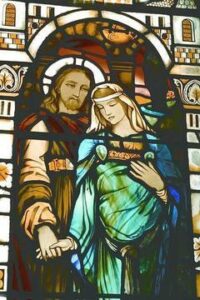
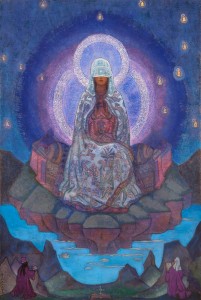


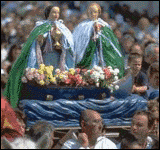 Margaret Starbird wrote:
Margaret Starbird wrote: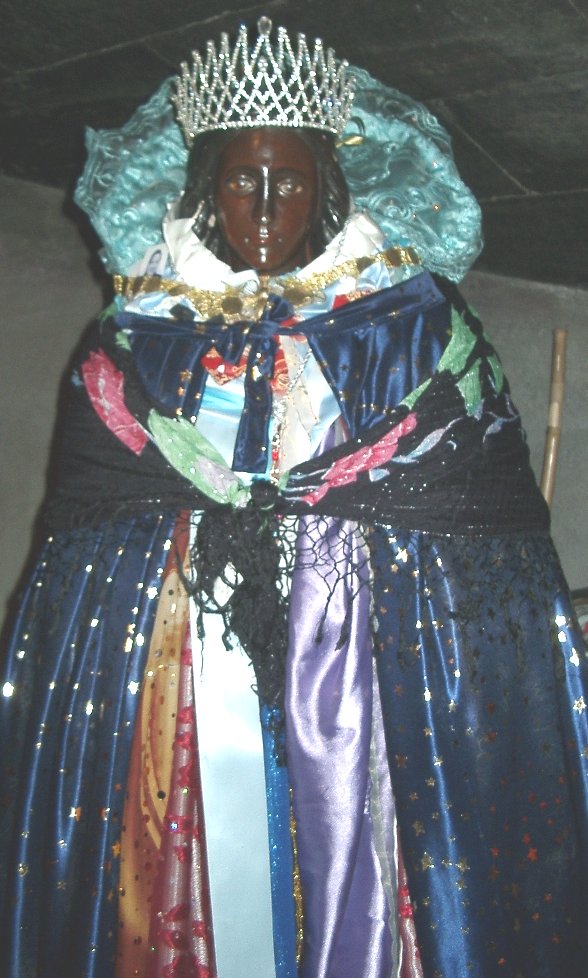
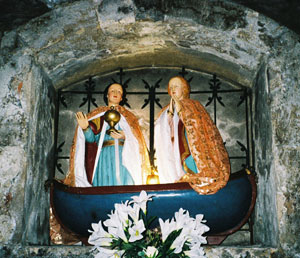 Here’s my story (longer version is published in my “Goddess in the Gospels.” While my husband was the district engineer in Nashville, TN, we were invited to go out dinner with a group French mayors and their wives who were visiting. At the time, I was totally immersed in “Grail” research and found myself sitting next to a French woman who was the wife of one of the deputy mayors. I asked her about the early Christians on the shores of France and she lit up like a torch…. she had been to all the shrines of the Black Madonnas and to St. Maries de la Mer and knew all the “lore.” She told me about St. Sarah, and when I asked who she was, Madame Capolla told me that Sarah was “the little girl on the boat” with Mary Magdalene and Martha and Lazarus and the others who came from Jerusalem. When I got home I looked up “Sarah” in my concordance and discovered that it means “Princess.”
Here’s my story (longer version is published in my “Goddess in the Gospels.” While my husband was the district engineer in Nashville, TN, we were invited to go out dinner with a group French mayors and their wives who were visiting. At the time, I was totally immersed in “Grail” research and found myself sitting next to a French woman who was the wife of one of the deputy mayors. I asked her about the early Christians on the shores of France and she lit up like a torch…. she had been to all the shrines of the Black Madonnas and to St. Maries de la Mer and knew all the “lore.” She told me about St. Sarah, and when I asked who she was, Madame Capolla told me that Sarah was “the little girl on the boat” with Mary Magdalene and Martha and Lazarus and the others who came from Jerusalem. When I got home I looked up “Sarah” in my concordance and discovered that it means “Princess.”